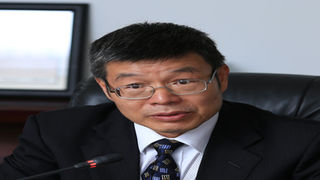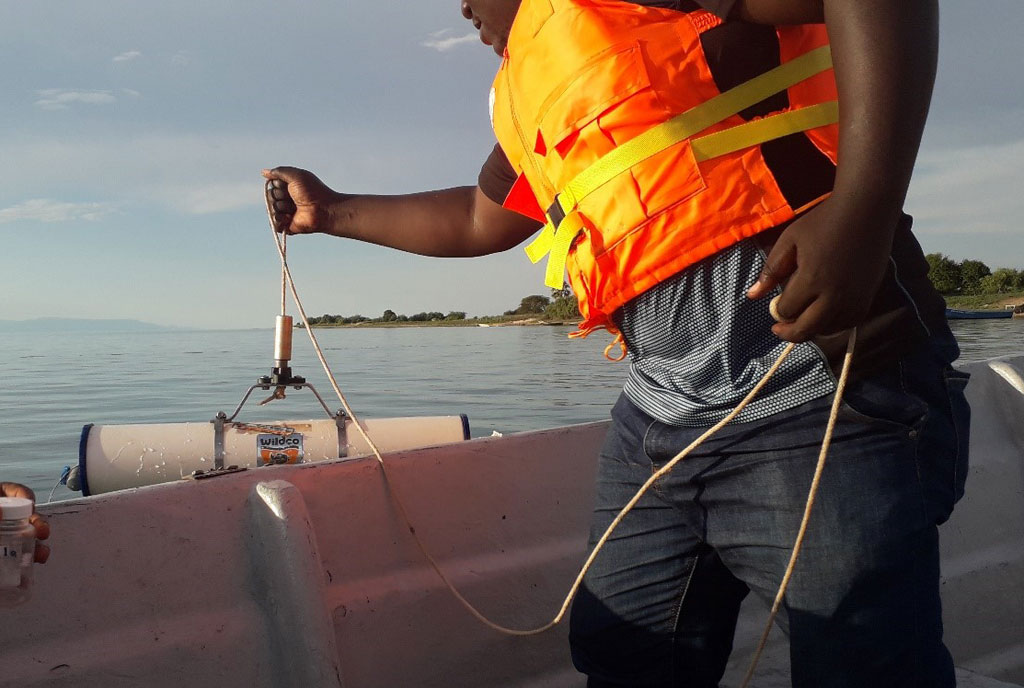
The Cnooc-Uganda president, Chen Zhuobio. PHOTO/COURTESY/CNOOC
|National
Prime
No more delays for oil flow, says Cnooc
What you need to know:
- The company has to oversee, among others, 47km feeder pipeline through three sub-counties and 29 villages.
2,716; The number of people expected to be employed by Cnooc.
On a humid mid-morning of September 25, 2013, ministry of Energy technocrats and Cnooc-Uganda officials led by the then vice president Jin Weigen, met in the boardroom on level four of Amber House to celebrate and announce a key milestone; issuance of a petroleum production licence, the greenlight to install and operate facilities required to pump oil from the ground.
The production license was for the Kingfisher well, now the Kingfisher development project, which straddles Hoima and Kikuube districts, South of Lake Albert in mid-western Uganda.
Immediately the company embarked on undertaking requisite studies to inform construction of facilities for pumping oil while butting heads with both the government bureaucracy and joint venture partners—Total E&P (now TotalEnergies EP) and Anglo-Irish Tullow Oil which has seen exited the Ugandan market.
It took eight years until early this year when Cnooc and TotalEnergies EP and local partners—UNOC and TPDC—announced Final Investment Decision (FID) for the Uganda oil project to move to the next development phase leading to commercial production expected to start in late 2025.
The Kingfisher development project is expected to pump first oil, increasing to 40,000 barrels of oil per day during peak production.
But before, Cnooc has to oversee among others, 47km feeder pipeline through three sub-counties and 29 villages from Buhuka, where a Central Processing Facility (CPF) is planned, to the main pumping terminal at Kabaale—also the station of the main crude oil pipeline and refinery. Then wellpads, camps, a construction yard, and flow lines connecting the 4 well pads.
The Cnooc-Uganda president, Mr Chen Zhuobio, told Daily Monitor that while the long wait was a bittersweet experience for his company, which opted for a minor eight percent stake in the proposed crude oil export pipeline, it also offered innumerable lessons.
The announcement of FID on February 1 was a momentous day for Cnooc. How significant was it?
This was a significant day for the country, and JV partners and particularly Cnooc-Uganda Ltd as it marked our commitment as licensees to bring first oil to Uganda.
As the saying goes, a journey of a thousand steps begins with one step, we have walked many steps and FID is that other but key step that will take us to first oil and thus a very significant one to the company.
It took almost a decade to get there. Was the wait worthwhile?
As a company, this was worthwhile because it gave the country and we as licensees the time to sort out critical issues before development of the fields.
Preparations like; having the desired regulation, infrastructure, human resource among other things before proceeding with the development and production phase. Most of these are now in place and we believe that we can push the project forward.
What next for your company in terms of investment in Kingfisher and EACOP?
The post FID stage of the project involves development (that is engineering, procurement and construction) of the upstream and midstream projects. There is going to be a massive procurement and construction activities that in turn will boost the economy through huge capital injection in the projects.
What’s the outlook for the Kingfisher development?
We shall continue to develop the oil field as environmentally friendly and sustainable. Works of Kingfisher development are underway in an orderly manner to ensure attaining first oil in early 2025.
The development includes; production Scheme: Fluid produced in four well pads flow into Central Processing Facility (CPF) for treatment. Specified crude oil transfer to Kabaale delivery point via 47.6 feeder line, and dispatched to refinery and EACOP Facilities to be constructed: four Well Pads with 31 wells.

Energy Minister Ruth Nankabirwa during the launch of construction of the Kingfisher oil project operated by Chinese oil company, Cnooc in February. PHOTO/FILE
There are four major packages for Kingfisher; Engineering, Procurement, and Construction (EPC) 1, EPC 2, EPC3, and EPC4.
How many tenders have you so far awarded? Which are the companies, foreign and local?
On February 8, we awarded four major contracts including EPC3, integrated drilling services, Casing and Tabulars and EPC1.
On February 11, works kicked off with the launch of EPC1 contractor, Excel Construction Ltd to construct well pads, access roads, and water intake points, among others.
In your speech at the annual oil and gas convention last month you emphasised your company’s plans to promote local content
Our plans for local content promotion are categorised into three areas. First, job creation; expected employment of more than 2,716 Ugandans (over 78 percent of total personnel).
Second, the use of local expertise, goods and services with priority given to sourcing most goods and services locally, only those that cannot be obtained from local suppliers are sourced internationally.
For contractors, stringent clauses have been included in the contracts emphasizing adherence to the obligations and commitment to national content development.
In order to realise the national content goals, supplier development programmes are being conducted to enable local providers become compliant and be able to provide services to the oil and gas sector.
Third is, education, skills transfer, training and expertise development. Vocational skills training of 100 selected youth from affected households is ongoing at the Nile Vocational Institute in Hoima.
The beneficiaries are undergoing training in welding, motorcycle basic mechanics, motor vehicle basic mechanics, building construction, tailoring, catering, hair dressing.
Is the ground levelled enough for Cnooc to get on with the development phase?
We believe everything is in order and most of the hurdles have been overcome and we shall move smoothly in the development phase.
That said, we cannot discount the fact that with the size of the project and associated activities, there are a number of unpredictable risks.
What is key is preparedness and being mindful of such through responsive emergency preparedness systems.
What are the lingering challenges?
We are currently faced with the challenge of the Kabwoya Buhuka road that needs to be tarmacked so as to meet the KF Development Area Project transportation needs and thus achieve commitment of first oil as planned.
What are your hopes and expectations for the development phase?
We hope for the company this year to achieve drilling spudding by end of December 2022, ensuring the four EPCs projects’ achieve their milestone as per the schedule of First oil and for EACOP to focus implementation of its project progress to meet First oil deadline.
The longer-term strategic pillars of Cnooc Uganda, are to focus on First oil by early 2025 and set the benchmark the East African Region and beyond.
Is the first oil date of 2025 still tenable?
We are currently on schedule with our planned works and we believe first oil is attainable by early 2025 at latest.
There is a lot of de-campaigning of the Uganda oil project over among other climate change and environmental concerns. What do you make of the arguments for?
Cnooc is committed to the development of the oil and gas resources sustainably and in a more environmentally friendly manner as we invest and innovate in renewable energy.
We believe the transition to renewable energy is inevitable, but this has to be done in a systematic manner.
We need to sync reality with the need to transition. Until we can fill the energy gap that fossil fuels currently occupy, we cannot transition.
The oil project and all its components, will be developed in strict compliance with all the national laws and regulations and international best practices.




